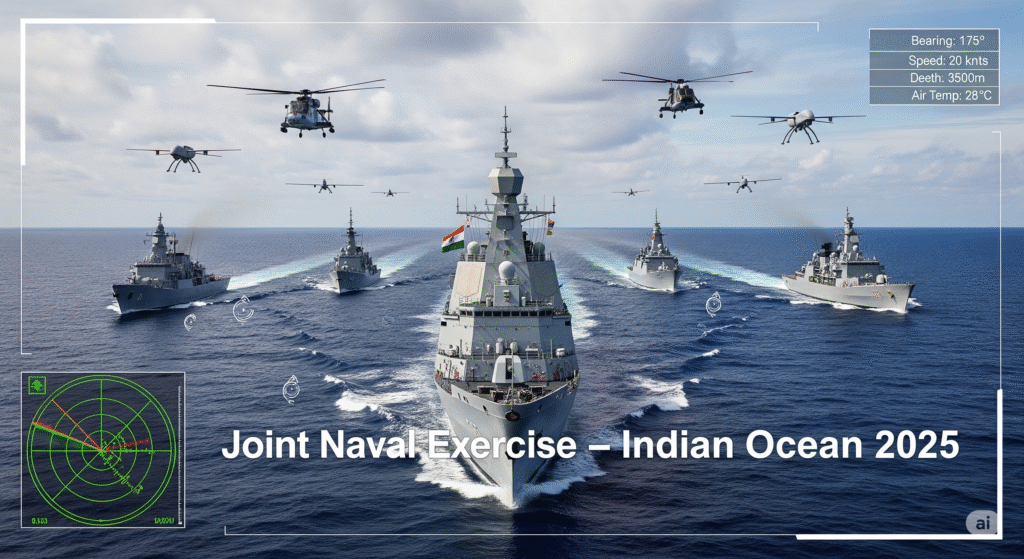UNTCC 2025 Takeaways: India’s Evolving Role in Global Peacekeeping
The curtains have just fallen on the United Nations Troop Contributing Countries’ (UNTCC) Chiefs’ Conclave 2025 in New Delhi, a three-day gathering from October 14 to 16 that brought together senior military leaders from 32 nations committed to UN peacekeeping. Hosted by the Indian Army at the Manekshaw Centre, the event—inaugurated by Defence Minister Rajnath Singh—reaffirmed India’s stature as the third-largest contributor to UN missions, with over 290,000 peacekeepers deployed since 1948 and 180 lives lost in service. Amid a world grappling with 56 active conflicts and hybrid threats, what were the key takeaways? How does India envision reforming peacekeeping for the future? This conclave wasn’t just a forum; it was a clarion call for adaptability in an era of geopolitical flux.
A Global Gathering: Setting the Stage in New Delhi
The UNTCC 2025 arrived at a pivotal moment. Delegations from countries like Algeria, Australia, Bangladesh, Bhutan, Brazil, Egypt, Fiji, France, Ghana, Italy, Kazakhstan, Kenya, Nepal, Nigeria, Poland, Rwanda, Senegal, Sri Lanka, Tanzania, Thailand, Uganda, and Vietnam converged in the capital, joined by UN Under-Secretary-General for Peace Operations Jean-Pierre Lacroix. External Affairs Minister S. Jaishankar and Chief of Defence Staff General Anil Chauhan also addressed the assembly, underscoring India’s holistic approach to global stability.
In his keynote, Rajnath Singh invoked the ancient ethos of Vasudhaiva Kutumbakam (the world is one family) and Ahinsa (non-violence), framing peacekeeping as a moral imperative rather than mere duty. He highlighted India’s participation in over 50 UN missions and lambasted nations “openly violating” international rules while pushing self-serving norms to dominate the 21st century. “India stands firm on the rules-based order,” Singh declared, advocating reforms to “outdated” UN structures without naming culprits—though the subtext pointed to ongoing tensions in Ukraine, Gaza, and the Indo-Pacific.
Chief of Army Staff General Upendra Dwivedi, drawing from his own Somalia peacekeeping experience, painted a sobering picture: the global order is at an “inflection point,” with hybrid warfare, disinformation, and new technologies complicating missions. “Peacekeeping today faces challenges of unprecedented scale,” Dwivedi noted, urging “bold imagination and practical adaptability” to integrate AI, drones, and cyber defenses while reducing troop footprints through preventive diplomacy.
Key Discussions: Navigating Evolving Threats and Reforms
The plenary sessions delved into pressing issues, fostering interoperability and innovation among troop contributors. Discussions centered on:
- Hybrid Warfare and Technology: With conflicts blending conventional, cyber, and info ops, delegates stressed tech-enabled peacekeeping. India’s Centre for UN Peacekeeping (CUNPK) was lauded for its February 2025 Women Peacekeepers Conference from the Global South, pushing gender parity—women now comprise 13% of Indian contingents.
- Operational Challenges: Evolving threats like asymmetric attacks demand better training. The conclave explored interoperability in multi-nation ops, with India’s 290,000+ contributions (including 5,000+ current troops) as a benchmark. Lacroix praised India’s sacrifices, noting 180 fatalities as a testament to commitment.
- Inclusivity and Reforms: Voices called for UN restructuring to match today’s realities—more veto powers? Faster reimbursements? Dwivedi advocated balancing troop reductions with “smart” tools like AI analytics for threat prediction.
A standout was the focus on Vasudhaiva Kutumbakam as a guiding philosophy, echoed in viral X posts from @PTI_News showing Dwivedi: “India’s participation reflects our civilisational ethos of Vishwa Bandhu (friend of the world).” The event wrapped with commitments to expanded capacity-building, including joint exercises and tech-sharing.
For a quick overview of India’s peacekeeping footprint:
| Metric | Details | Global Rank |
|---|---|---|
| Total Peacekeepers Deployed (Since 1948) | 290,000+ | 3rd |
| Current Troops (2025) | 5,000+ across 7 missions | Top 5 |
| Missions Participated | 50+ | 1st |
| Fatalities | 180 | High Commitment |
| Women Peacekeepers | 13% of contingents | Leading in Global South |
| Source: UN/MoD 2025 | India’s Legacy in Blue Helmets | ||
Analysis: Bilaterals, LAC Implications, and Global Tensions
Beyond rhetoric, UNTCC 2025 yielded tangible gains. Sideline meetings—like Dwivedi’s with Kazakh and Italian counterparts—strengthened bilateral ties, potentially unlocking training exchanges. For India, this dovetails with LAC (Line of Actual Control) realities: peacekeeping lessons in hybrid threats directly inform border strategies, enhancing interoperability with QUAD partners like Australia (present at the conclave).
Globally, the event signals India’s soft power pivot. As conflicts rage in Ukraine and Gaza, UNTCC reinforces multilateralism against unilateralism. Reforms discussed—e.g., tech integration—could modernize UN ops, reducing reliance on outdated models. Yet, challenges persist: funding shortfalls and veto gridlock. India’s push for “future-ready” forces positions it as a bridge-builder, aligning with PM Modi’s G20 vision.
India’s Future Missions: Reforms Amid Global Tensions
Looking ahead, UNTCC 2025 charts a roadmap: enhanced CUNPK collaborations, women-led initiatives, and AI pilots in missions. With 56 conflicts worldwide, India’s “Vishwa Bandhu” stance—balancing aid with assertiveness—will be tested in hotspots like Sudan or the Sahel.
In conclusion, this conclave cements India’s evolving role: from troop provider to reform architect. As Singh put it, peacekeeping is “a moral commitment to humanity.” With reforms on the horizon, UNTCC 2025 isn’t an end—it’s a launchpad for a more resilient global order. What’s your take on India’s peacekeeping pivot? Share below!



